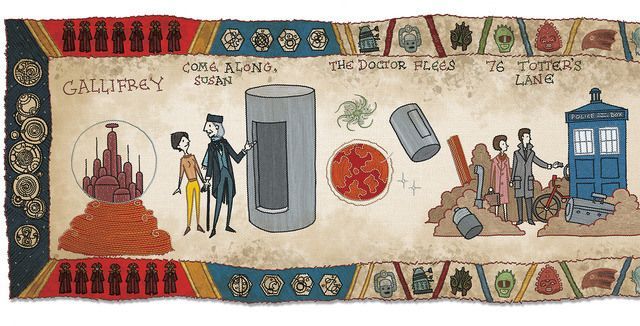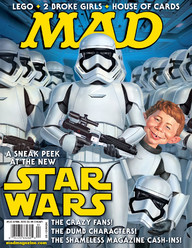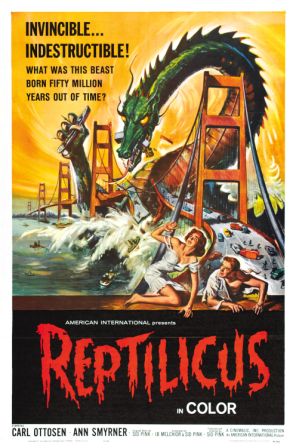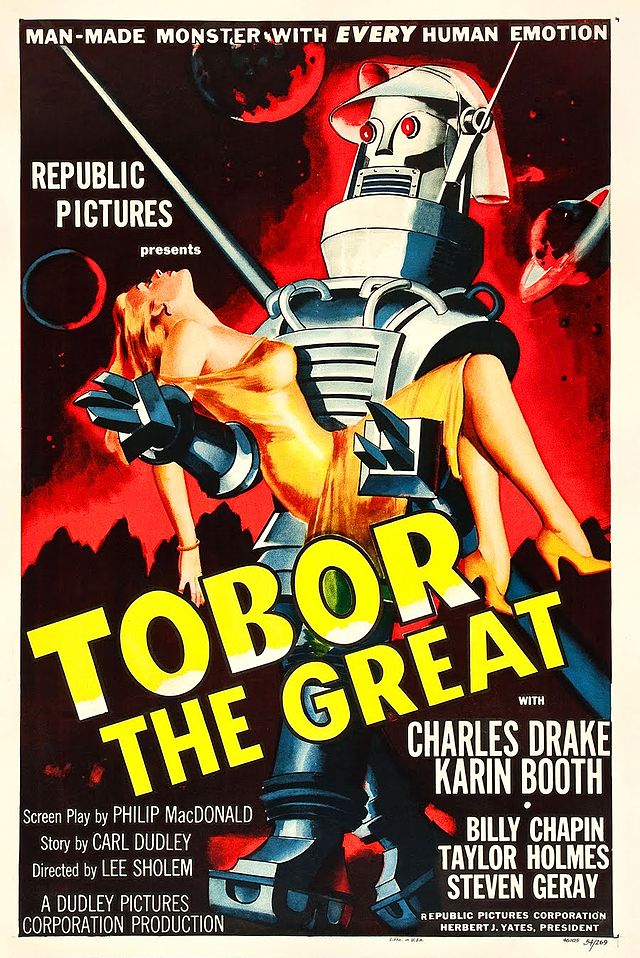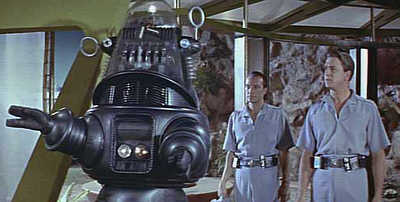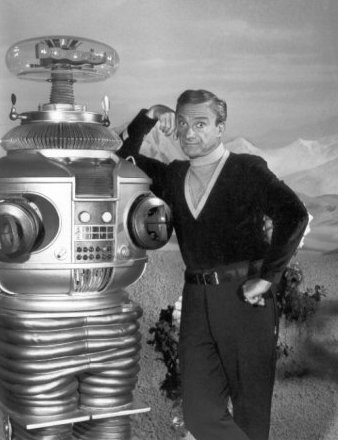(1) For lovers and others of giant movie monsters, “Doc Kaiju” — well known at the Classic Horror Film Board — has put together a rather remarkable compendium of such creatures: Kaijumatic: House of 1,000 Giant Monsters
Or, as he likes to put it:
Now with 1003 pages stuffed with 1670 big stars from 749 movies!
And, he updates it, constantly.
(2) Barney Evans has uploaded 50 photos taken at the 1988 Loscon, including many from the masquerade.
(3) “David Tennant Answers Our Burning Questions… Sort Of” in a Yahoo! video and profile.
As any David Tennant fan knows after years of watching him promote Doctor Who and Broadchurch, no one evades questions more delightfully. Hoping some of the mind control capabilities of his latest character, the villainous Kilgrave in Marvel’s Jessica Jones (now streaming on Netflix), had rubbed off on us, we invited him in to Yahoo Studios, handed him a card filled with questions, and asked him to answer them.
One example:
Name a book, TV show, or movie you’ve pretended to have read or seen, but you totally haven’t.
That’s a very good question. Probably in audition I’ve done that several times with some worthy director, who asked me what I thought of their latest opus.
(4) Entertainment Weekly looks on as “Stephen Colbert mocks scientists for making wrong Lord of the Rings reference”:
This week, a new species of spider was identified and given the name Iandumoema smeagol, a reference to Smeagol, the hobbit who would become Gollum after getting ahold of the One Ring. The cave-dwelling spider was given the name Smeagol because it shared a similar lifestyle with the character, who lived in a cave and stayed out of the sun until he morphed into the monstrous Gollum.
Colbert, however, wasn’t having any of it on Friday’s show. “Smeagol wasn’t a scary creature who lived in a cave,” Colbert said before recounting Smeagol’s biography, and how he killed his cousin after finding the One Ring.
Explained Colbert: “Smeagol hid from his guilt and the yellow face of the sun, by retreating into a cave, where his shame and his fear turned him into an unrecognizable creature. That creature wasn’t Smeagol anymore; that creature was Gollum. You should have named the spider Gollum. You don’t discover a venomous snake and name it Anakin. You name it Darth Vader.”
(5) Brandon Kempner strikes gold in “SFWA 2015 Nebula Recommended Reading List: Analysis and Prediction” at Chaos Horizon.
Table 1: Correlation Between Top 6 (and Ties) of the 2014 Nebula Suggested Reading List and the Eventual 2014 Nebula Nominees
Novel: 4 out of 6, 67.7%
Novella: 6 out of 6, 100%
Novelette: 5 out of 6, 83.3%
Short Story: 6 out of 7, 85.7%
(6) Netflix will remake Lost in Space.
The original comedy, which ran from 1965 to 1968, centered on the Robinson family as they attempted to colonize another planet in deep space — a mission that was sabotaged by a foreign secret agent and caused their ship to get knocked off course.
According to our sister site Deadline, the updated version is an epic (but grounded!) sci-fi saga about “a young explorer family from Earth, lost in an alien universe, and the challenges they face in staying together against seemingly insurmountable odds.”
(7) Laughing Squid presents the entire history of Doctor Who illustrated as a medieval tapestry.
In celebration of the 50th anniversary of Doctor Who, Bill Mudron has created a “slightly ridiculous” tribute to the Bayeux Tapestry that shows the entire history of the show. It begins when the Doctor runs away from his home planet of Gallifrey and ends with “The Day of the Doctor,” the 75-minute 50 anniversary special set to air on BBC One on November 23rd, 2013. A larger version of the illustration can be found on Mudron’s Flickr, and prints are available to pre-order online.
(8) The sparks fly when Galactic Journey’s time traveler to the sf genre of 55 years ago rubs together the contemporary and historical notions of political correctness in “I aim at the Stars (but sometimes I hit London)” .
If the United States is doing well in the Space Race, it is in no small thanks to a group of German expatriates who made their living causing terror and mayhem in the early half of the 1940s. I, of course, refer to Wehrner von Braun and his team of rocket scientists, half of whom were rounded up by the Allies after the War, the other half of whom apparently gave similar service to the Soviets.
The traveler comments on a hagiographic von Braun biopic released at the time, and provides a scan of the souvenir Dell comic book based on the film.
(9) Michael J. Martinez prepping to see the new Star Wars movie by watching the two original trilogies in their canonical order. He begins — Star Wars wayback machine: The Phantom Menace.
This is basically a movie that’s supposed to remind us of the first trilogy, but does very little to actually create an origin story for those older movies. Instead, we have attempts at nostalgia. Look, Jedi! Lightsabers! The Force! Spaceships and space battles! But even there, we have problems. Such as:
There’s no smart-ass. All the prequels were missing the Han Solo archetype — the scrappy outsider and audience surrogate who can stand toe-to-toe with these gods and monsters.
There’s George Lucas’ efforts at being cute, with the Gungans. I think George felt that he needed to appeal to the cute younger audiences, starting with Return of the Jedi, and thus we had Ewoks. Now we have Gungans, complete with silly mannerisms and catchphrases. Adults always underestimate kids’ ability to grasp nuanced entertainment, and this is no exception. We didn’t need Gungans.
The stereotypical accents and mannerisms of the Gungans and the Trade Federation folk have been covered elsewhere. But still…WTF were you thinking, man? Just no.
Wooden dialogue and stiff acting. I think I know what George was going for here — a shout-out to the sci-fi serials and movies of the 1940s and 1950s. Fine, I get it. But it didn’t work. At all.
(10) “Don’t nominate me for any awards” posts Lela E. Buis.
I don’t want to be left out of the trending commentary….
(11) “4 Beautiful Ray Bradbury Quotes That Celebrate Autumn” selected by Jake Offenhartz at History Buff.
Though mid-afternoon sunsets and leafless trees may give the impression that winter is fast approaching, we’re still technically just halfway through fall. Which strikes us as good enough reason to look back at the work of Ray Bradbury—master of science fiction, adversary of censorship, and chronicler of all things fall. The author wrote extensively about the season, penning autumnal wisdom in various projects throughout his career, most notably in a short story collection called The October Season and a novel titled The Halloween Tree. We’ve collected some of our favorite fall-related quotes below, so cozy up and have a read:
1. The October Country (1955)
“That country where it is always turning late in the year. That country where the hills are fog and the rivers are mist; where noons go quickly, dusks and twilights linger, and midnights stay. That country composed in the main of cellars, sub-cellars, coal-bins, closets, attics, and pantries faced away from the sun. That country whose people are autumn people, thinking only autumn thoughts. Whose people passing at night on the empty walks sound like rain.”
(12) Merlin is in Disney’s future says CinemaBlend.
If you were going to create a checklist for how to make a current Hollywood blockbuster there are a few things you want to be sure were on it. First, you want to base it on an already existing piece of fiction, preferably a book. It would be even better if it were a series of books, about a character people were already familiar with. It would need to be able to have big fantasy action set pieces too. Then you want to bring in a production team that was involved in one of the previous fantasy action franchises based on a series of books, because that stuff looks great on a trailer. It looks like Disney just checked off all their boxes as they just brought in an Academy Award winning screenwriter from The Lord of the Rings to pen the screenplay based on a 12 book series about Merlin the magician.
Philippa Boyens is known, almost exclusively, as one of the writers behind the incredibly successful films based on the works of J.R.R. Tolkien.
(13) Guy Gavriel Kay, Member of the Order of Canada.
Official Order of Canada photo w Governor General. All credit to him, smiles, & shakes a LOT of hands for photos! pic.twitter.com/vuZdFr4Uon
— Guy Gavriel Kay (@guygavrielkay) November 20, 2015
(14) Caitlin Kiernan, two-time WFA winner, regrets the Lovecraft bust is being retired, in her post “I have seen what the darkness does.”
You may or may not have heard that the World Fantasy Committee has voted to change the design of the World Fantasy Award from Gahan Wilson’s bust of Lovecraft, which has served as the award since it was first given out in 1975. No, I don’t approve. I don’t believe this was the appropriate course of action. I’m saddened by this lamentable turn of events, and I’m glad that I received my two World Fantasy awards in advance of this change. How long, now, before the Mystery Writers of America are pressured to abandon the Edgar Award? When we set this sort of thing in motion, where does it end?
(15) A limited TV series based on a Vonnegut book – it could happen, reports A.V. Club.
Back in April, we reported that Kurt Vonnegut’s fourth novel, Cat’s Cradle, had been optioned for TV by IM Global Television. At that point almost nothing was known about the project other than the fact that it would indeed use Cat’s Cradle as its source material, which is implicit in a TV show labeled as Cat’s Cradle adaptation. Now though, according to Deadline, a precious few details have emerged: the show will live on FX as a limited series, and be written and executive produced by Fargo creator Noah Hawley.
Vonnegut’s original work was published in 1963 and takes on science, technology, and religion with equal satirical fire. After the novel’s narrator, John, becomes involved in the lives of the adult children of Felix Hoenikker, a fictional co-creator of the atomic bomb, he travels to the fake Caribbean island of San Lorenzo and encounters a strange outlawed religion called Bokononism that many of the area’s inhabitants practice anyway. Through Hoenikker’s children he also learns about ice-nine, a way to freeze water at room temperature that could be devastating if used improperly. Needless to say, destruction and dark humor ensue.
(16) On its February cover, Mad Magazine slipped Alfred E. Newman into a crowd of storm troopers.
(17) IGN will be ranking the top 100 movie trailers of all time in a feature that will be unveiled November 23-25.
(18) Comic Book Resources retells a bit of lore about the making of Star Trek IV: The Voyage Home in “Movie Legends Revealed: The Accidental ‘Star Trek’ Actress?”
It is a funny scene, but it was also ad-libbed. Notice how everyone else ignores them? The woman who answered them was also supposed to ignore them. The comedy was supposed to derive from the fact that they couldn’t get an answer (and, yes, from the way Chekov says “vessels”).
The woman in question was San Francisco resident Layla Sarakalo, who woke up one day to discover her car had been towed. She had missed the notices that “Star Trek” was filming on her street, and her car was in the way. She decided that one way to get the money to pay for the towing was to get a job as an extra on the set.
[Thanks to Shambles, James H. Burns, Will R., John King Tarpinian, and Lynn Maudlin for some of these stories. Title credit goes to File 770 contributing editor of the day Brian Z.]

